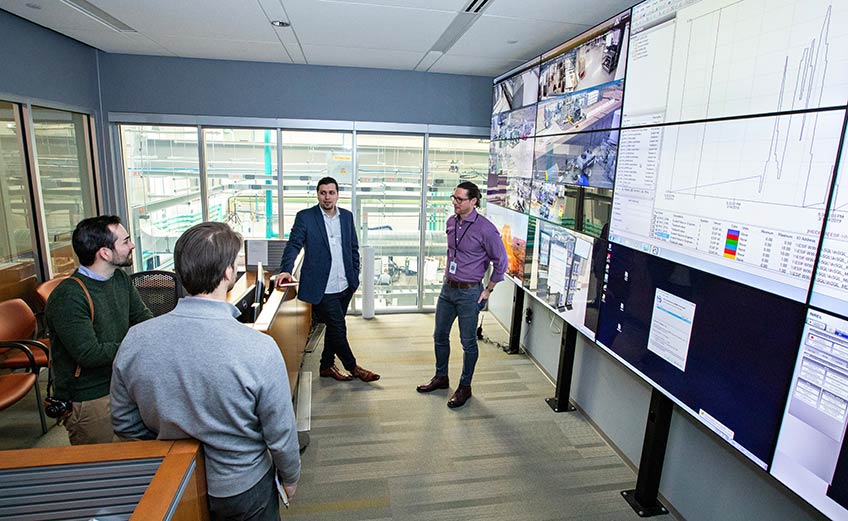NREL Collaborates with ComEd on Evaluating Highly Efficient Technologies for Buildings Energy Savings
The National Renewable Energy Laboratory (NREL) recently partnered with the midwestern utility company Commonwealth Edison (ComEd) on a project that will help the utility reach their goal of nearly doubling savings for customers and reducing electricity use in Illinois by 21% by 2030. This new collaboration with NREL will help ComEd reach their goal through more energy-efficient technologies for buildings.

This partnership was initiated by Bill Livingood, manager of NREL's Commercial Buildings Research Group. Staff from NREL's Commercial Buildings Research Group and Building Energy Science Group are leveraging their core skills of simulation and laboratory experimentation to help ComEd address its energy reduction goals.
In order to meet this goal, the NREL team is utilizing its vast network of industry partners, incubators, and conferences to create a list of the most viable energy-efficient technologies applicable to buildings. NREL researchers will provide annualized energy savings for ComEd’s specific territory, allowing them to determine the value proposition of each identified and prioritized technology. ComEd can then take these top-selected technologies and incorporate them into their next cycle of energy efficiency incentive program design.
An initial list of technologies met the criteria that ComEd established for their emerging technology program, and from those identified, NREL researchers ranked the technologies and narrowed their suggested selections to proceed with the next step of experimentation.
The next step in the process is to develop detailed experimentation plans for each individual technology and then carry out R&D evaluations. Fortunately, several of the technologies selected build on existing research conducted by NREL.
“The beauty of the selected technologies is that we are already leveraging the prior research knowledge that we have accumulated at NREL, and then applying it to a different application for this particular utility. We’re going to minimize the cost of those technology evaluations by tapping into the previous intel and knowledge that we’ve gathered,” said Ramin Faramarzi, NREL's principal investigator for the ComEd partnership project.
The Department of Energy (DOE) is also very interested in the work NREL is doing with ComEd and has joined the collaboration with a unique focus on load flexibility in commercial buildings. DOE is especially interested in working with ComEd to determine how the selected technologies could offer further value by providing grid services such as load flexibility.
Although the first few approved technologies have already begun evaluations, there is an opportunity for the other technologies to be evaluated at NREL’s Energy Systems Integration Facility. The space in the ESIF has recently been renovated to fast-track scalable solutions with energy use, generation, storage among buildings, vehicles, and the larger electric grid. Ultimately, the ESIF will explore integrated energy pathways.
“We’re supporting the ComEd partnership by making sure the ESIF is ready to evaluate any ComEd technologies using hardware-in-the-loop capabilities. We plan to leverage the ESIF’s unique capability as a flight simulator for commercial buildings to evaluate energy savings for ComEd and grid services for DOE. This type of collaboration is a great step for the renovated ESIF as it illustrates to other utilities and DOE how to use this new capability to answer their urgent needs,” said Grant Wheeler, principal investigator for a portion of the ESIF.
The dedicated space in the ESIF is still in its early stages of use; the commercial buildings side of the lab only opened on June 28. But the potential research and future projects to be conducted in the space, such as the ComEd partnership project, are expected to have far-reaching impacts.
“We are hoping that through the course of this project, we will pave the path for a much more expansive and long-term relationship beyond this contract that we currently have with ComEd. We would like to continue the role of an unbiased and impartial energy adviser in support of ComEd’s energy efficiency program,” said Faramarzi.
Last Updated May 28, 2025
